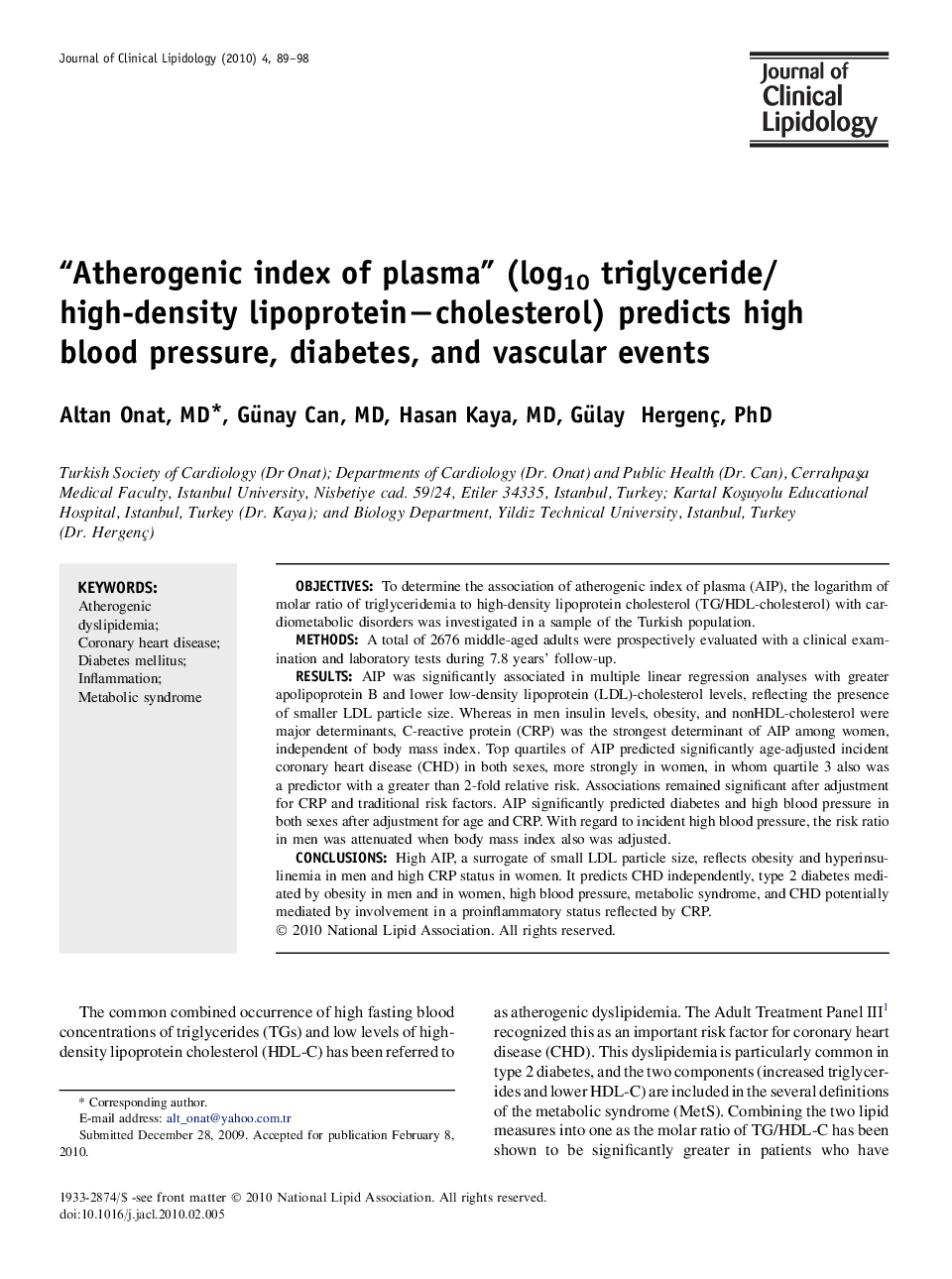| Article ID | Journal | Published Year | Pages | File Type |
|---|---|---|---|---|
| 2966372 | Journal of Clinical Lipidology | 2010 | 10 Pages |
ObjectivesTo determine the association of atherogenic index of plasma (AIP), the logarithm of molar ratio of triglyceridemia to high-density lipoprotein cholesterol (TG/HDL-cholesterol) with cardiometabolic disorders was investigated in a sample of the Turkish population.MethodsA total of 2676 middle-aged adults were prospectively evaluated with a clinical examination and laboratory tests during 7.8 years' follow-up.ResultsAIP was significantly associated in multiple linear regression analyses with greater apolipoprotein B and lower low-density lipoprotein (LDL)-cholesterol levels, reflecting the presence of smaller LDL particle size. Whereas in men insulin levels, obesity, and nonHDL-cholesterol were major determinants, C-reactive protein (CRP) was the strongest determinant of AIP among women, independent of body mass index. Top quartiles of AIP predicted significantly age-adjusted incident coronary heart disease (CHD) in both sexes, more strongly in women, in whom quartile 3 also was a predictor with a greater than 2-fold relative risk. Associations remained significant after adjustment for CRP and traditional risk factors. AIP significantly predicted diabetes and high blood pressure in both sexes after adjustment for age and CRP. With regard to incident high blood pressure, the risk ratio in men was attenuated when body mass index also was adjusted.ConclusionsHigh AIP, a surrogate of small LDL particle size, reflects obesity and hyperinsulinemia in men and high CRP status in women. It predicts CHD independently, type 2 diabetes mediated by obesity in men and in women, high blood pressure, metabolic syndrome, and CHD potentially mediated by involvement in a proinflammatory status reflected by CRP.
